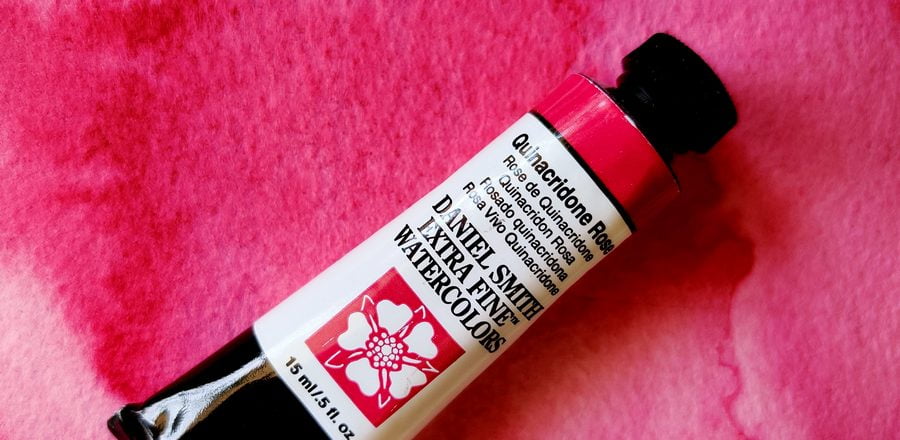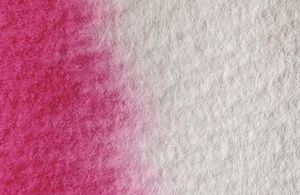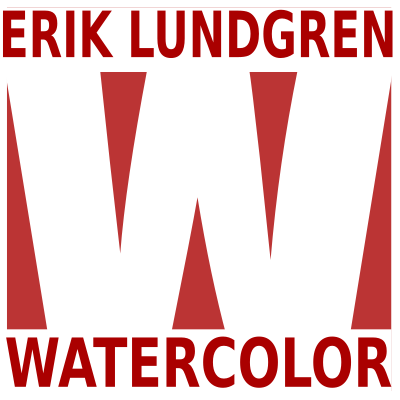Quinacridone Rose – PV19
September 28, 2020

Quinacridone comes in many different varieties, the most useful for the artist is probably the one who usually gets the name Quinacridone Rose. The pigment has the index name PV19 but due to its crystal form the pigment can also have other red tones, so there are different variants of PV19, a cold red, which this text is about, and a more violet (but also others) which I will write about later . Hilary Page chose in her book “Guide to Watercolor Paints” to name the red PV19 R and the violet PV19 B, I think that is a very good idea.
The pigment was invented as early as 1935 but did not come into commercial form until 1958, so it is a relatively new dye. The color is transparent, which is due to the extremely small pigment granules, which also get the color to stick tightly to the paper, the color is staining. The color has a very clean hue, so it is very easy to mix with, but may not work so well unmixed.
As important as phthalo green is in the green register is PV19 R in the red, it is the perfect primary red color, there are several competitors for that title, but the winner is without a doubt PV19 R. Try to mix it with Phthalo green yellow tone, the result becomes a transparent neutral gray, no other red gives this result. I think that everyone who paints should have the color, you may not use it all the time, there are other cold reds that are also nice, but to achieve nicely balanced color mixtures, it works best of all.

As with other colors with difficult names, many manufacturers choose to come up with imaginary names for the color instead of naming it in a sensible way. Here are some different manufacturers’ names for the color quinacridone rose:
Da Vinci: Quinacridone Carmine
Grumbacher: Carmine Hue
Schmincke: Permanent Carmine
Schmincke: Ruby Red
Old Holland: Sheveningen Rose Deep
Winsor & Newton: Permanent Rose
Blockx: Rose Lake
Many others call it: Quinacridone Rose
(As you can see, some manufacturers use the name Carmine for the paint, also called cochineal, a dye extracted from the insect cochineal that lives in South America. Nowadays, the name is used as a general term for cold dark red paints. The dye is no longer used in artist paints.)





Information
Color index name: PV19
Lightfastness: Excellent
Transparency: Yes, very
Staining:Yes













I own DS Quin Rose and it makes amazing purples too
Yes it does. It is very good to mix with.